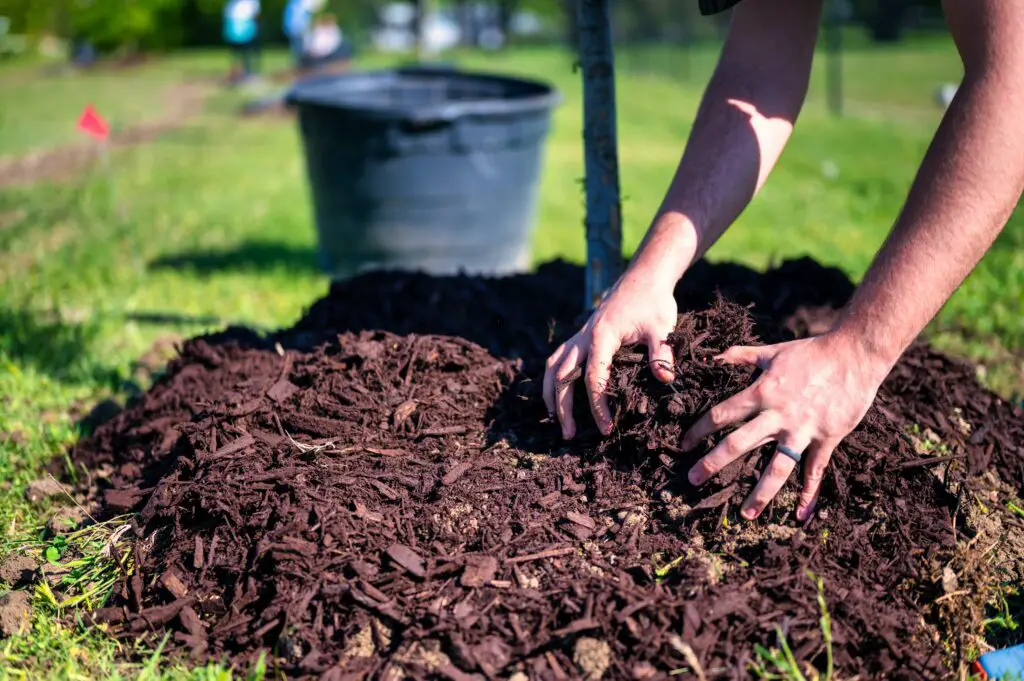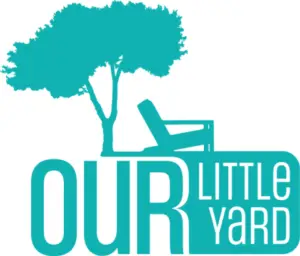At our house, mulching has become a family affair. We realized a couple of years ago how much faster it goes with a team. Adults take care of the heavy transport and shoveling the mulch, while the kids use rakes to help us spread it around in an even layer. Within a few hours, our four mulched beds have a fresh layer of mulch, and we are all exhausted and hungry. The kids wonder out loud, “we don’t have to do this again until next year – right?”. They took the words right outta my mouth.
What is the Recommended Frequency for Mulching?
If you pay to have your yard professionally managed and maintained, they will likely recommend mulching once or twice each year. If you are your own landscaping service and do all of the yearly maintenance tasks yourself, as I do, you can ease your workload by mulching every other year.

Regular mulching has many benefits, as it helps mimic the environment of a forest or other natural habitats of your plants. Mulch helps the soil surrounding your plants retain moisture and it helps regulate the temperature. Mulch also prevents erosion on sloping hillsides, reduces weeds by smothering them, and also adds nutrients to your soil. Over time, the layers of mulch decompose and erode, and mulch must be re-applied to keep gaining the benefits. I’m not suggesting that you wait until the mulch has eroded into a thin layer to re-mulch. Based on my experience described below, mulching every other year provides all of these benefits, and still allows you to maintain an adequate layer of mulch, provided you use enough from the start.
How Much Mulch Should I Use If I’m Not Mulching Annually?
To gain the full benefits of your mulch, you will want to apply a two to three inch layer of mulch if applying annually (this is assuming that you are using a standard wood/bark mulch). If you are only mulching every other year, as I do, you will need to use a thicker layer, to compensate for the mulch slowly decomposing over the two-year period. I recommend four to five inches of mulch.
According to the Virginia Cooperative Extension, mulch that is less than two inches thick will not provide the benefits of preserving soil moisture, preventing erosion, and supplementing the soil with nutrients.
If you elect to mulch every other year, some areas of your yard will require special attention. You may need to apply a spot treatment or two in places like sloping hillsides or areas where rain water runoff continually washes away mulch or speeds its decomposition. You will also want to apply spot treatments around any new plants that you add to your landscape in between mulching.
Another area that warrants a thicker layer of mulch is under children’s play equipment. The recommended mulch thickness under play equipment is nine inches. This may sound excessive, but it’s a recommendation that I take seriously.
The Centers for Disease Control (CDC) reports that more than 200,000 kids under the age of 14 are taken to Emergency Rooms each year in the U.S. due to falls and injuries on playground equipment. The added thickness of the mulch under play equipment provides cushion and shock absorption to make outdoor play safer, so it is well worth the extra time and expense to maintain this thick mulch layer.
How Should I Mulch Around Trees?
Mulching is one of the most beneficial things a homeowner can do for their trees. Mulch helps the soil around your trees retain moisture and provides it with essential nutrients, mimicking the ground conditions of the forest. As an added bonus for home landscaping, an adequate layer of mulch around your trees makes mowing and lawn care easier and helps keep the area surrounding your trees free of weeds. It is possible, however, to use too much mulch around your trees or to mulch them incorrectly, which can cause them harm.
Apply a two to four inch layer of mulch around your tree. Too much mulch over the tree’s root system can deprive them of oxygen and suffocate them. Pull the mulch back from the trunk so that it does not touch the bark. Mulch should never extend up the trunk of the tree. Check and adjust this mulch depth a few times throughout the year to make sure that you have enough.
What Time of Year Should I Mulch?
Mulching can be done at any time of year. There is no improper time to add a fresh layer of mulch. However, there are a few key timeframes in the year that you should consider.
As you enter the freezing season in early winter, you will want to make sure that trees and shrubs have an adequate layer of mulch around their soil (two to three inches) This will help to regulate the temperature of the soil as temperatures drop and slow the moisture loss that will likely occur through the winter. In short, two to three inches of mulch will help equip your plants to survive the winter conditions.
It is also important to check your mulch layers in early to mid-spring once the soil temperature has begun to warm up. At this time of year, there are many changes happening in your plants and the mulch will help give them the best chance for success:
- Mulch helps the soil retain moisture. The mulch collects and retains water to help your plants weather the spring and summer sunshine.
- Mulch will control weeds. As the soil temperatures rise, you will notice that weeds begin to sprout. Mulching will help smother the weeds and deprive them of sunlight.
- Mulch helps prevent runoff from spring rainfalls. Mulch is a great form of erosion control on steep sloping banks and hillsides.
- Mulch supplies your plants and soil with nutrients. As it decomposes, mulch supplies the soil with nutrients that your plants will then use to thrive.
